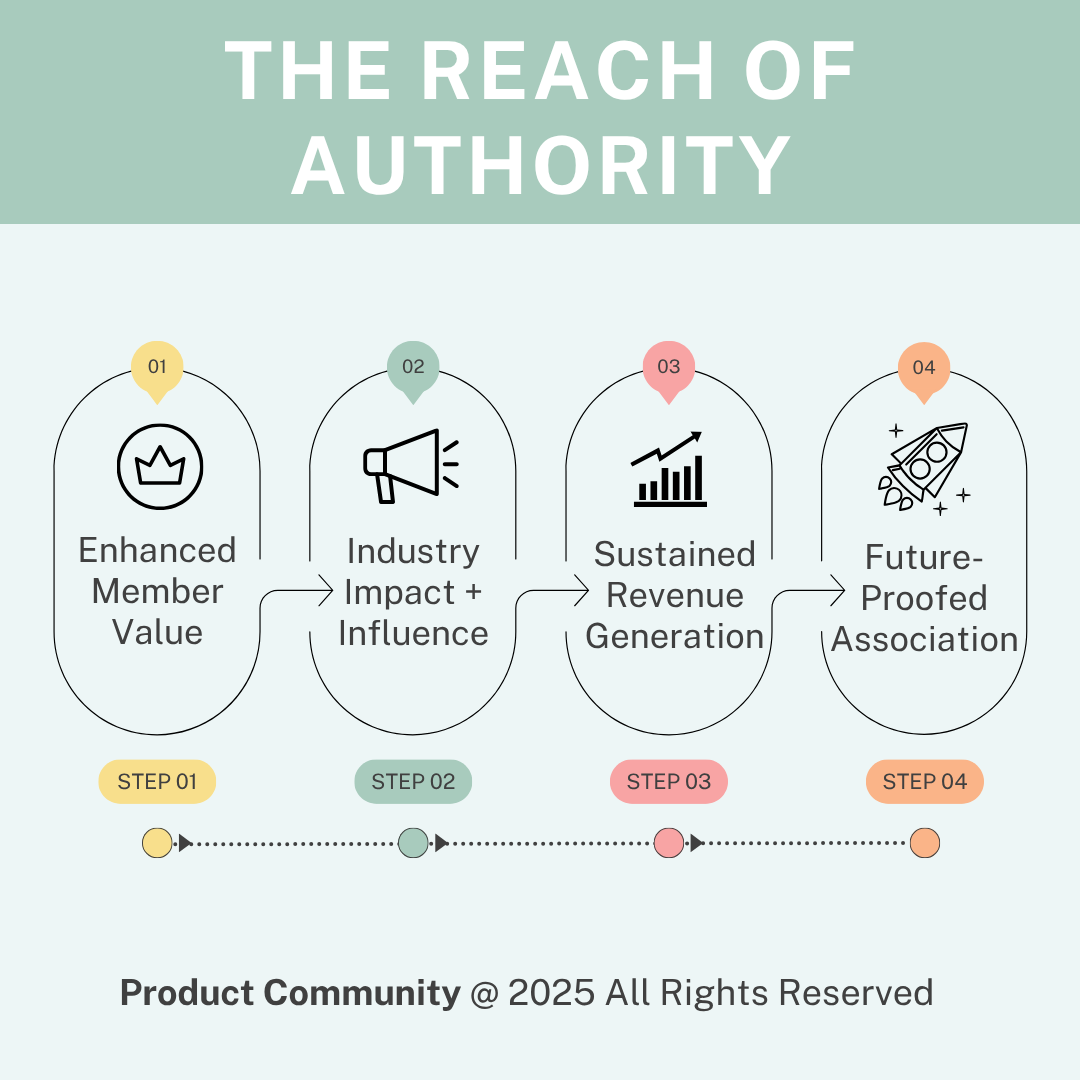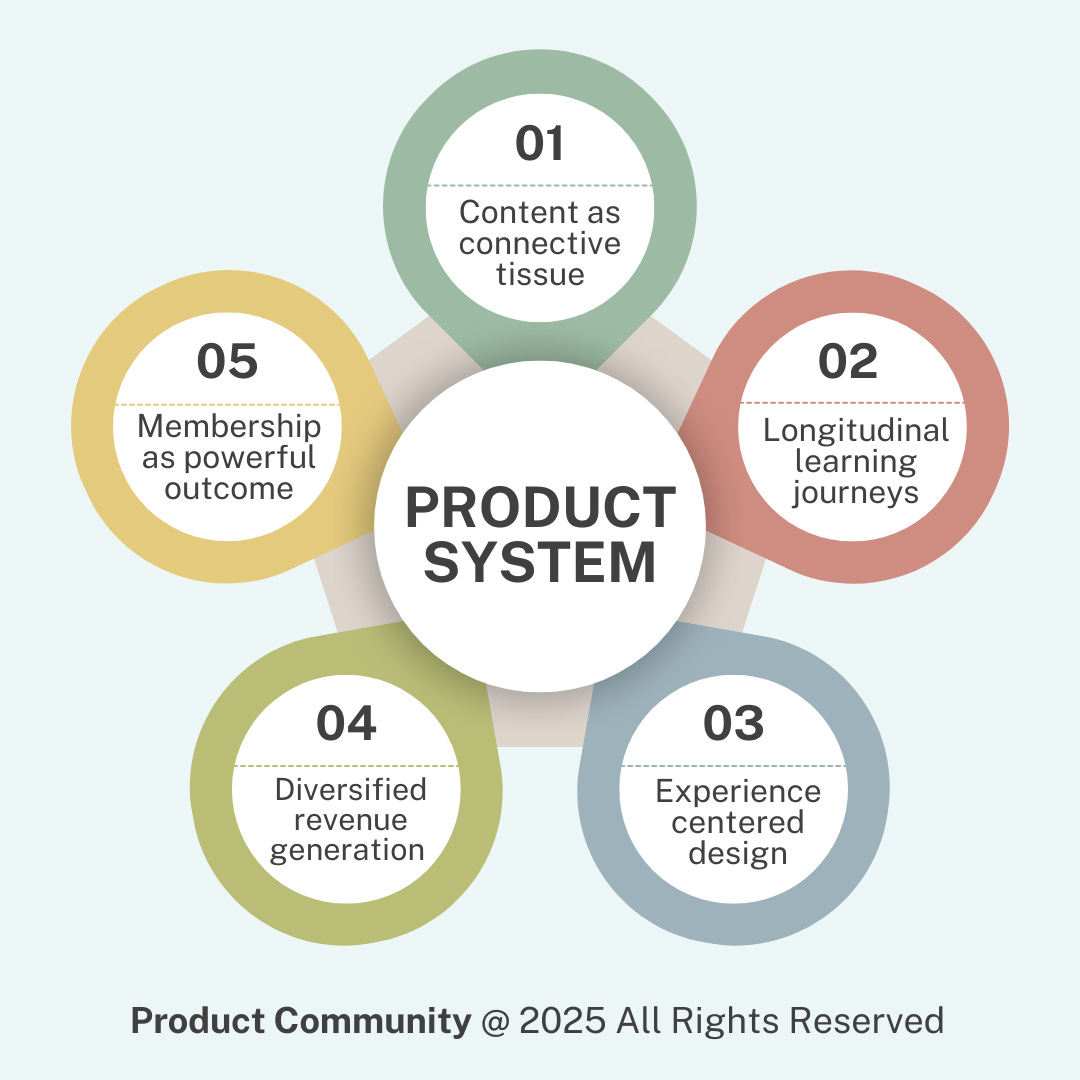The Revenue Potential of Thought Leadership
How to Position Your Association as an Indispensable Authority | The Benefits for Membership, Reputation, and Revenue
Summary
As I’ve written many times in this newsletter, associations are distinguished by their tight niches built around an industry, a profession, or a problem. To be a leading association requires authority, expertise, visibility, and community. It’s what we can become known for: the destination for the first and final word, a community of evidence, and a place to find, engage, or become a visible authority.
For your association to become a thought leader takes knowledge creation, ongoing peer engagement, and the continual testing of new ideas. Authority drives visibility and, done right, visibility can drive community. This goes beyond creating a hook or riding a wave. It entails asking big questions and using evidence to challenge existing paradigms. Is your association considered a go-to thought leader?
I lead the product community, a product development learning community designed specifically for associations. Let’s compare ideas and build something great.
Why Thought Leadership?
“After looking at 1,340 examples of successful experts, the only consistent trait was that they were risk-takers. That means that they were wrong a lot, but that they were usually right about the important things.”
David C. Baker
“Pre was stubborn. He insisted on holding himself to a higher standard than victory. A race is a work of art. That’s what he said. That’s what he believed. And he was out to make it one every step of the way.”
Bill Bowerman at the eulogy of Steve Prefontaine
Thought leadership means establishing your association as the authoritative voice in your industry or profession. It involves consistently developing and sharing innovative insights, anticipating trends, identifying problems, and providing solutions that advance your field while positioning your association as the go-to resource for expertise and strategic direction.
Unlike individual thought leaders who build personal brands, association thought leadership represents collective expertise and serves a broader mission of elevating an entire profession or industry. This might manifest through original research, white papers, educational content, policy recommendations, or facilitating important conversations that shape your field's future.
The imperative to embrace thought leadership has never been stronger. In an era where information is abundant but wisdom is scarce, associations that establish themselves as thought leaders double down on mission while creating a significant competitive advantage.
Enhanced Member Value and Engagement
Thought leadership directly translates to increased member value. When your association delivers fresh insights, members view their membership as indispensable. They come to rely on you not just for networking or continuing education, but as a strategic advisor helping them navigate industry changes and opportunities. This elevated value proposition can strengthen member retention and attract new members who seek to be associated with an org that shapes the future. Members become ambassadors, sharing your thought leadership and extending your influence throughout the industry.
Industry Influence and Policy Impact
Associations with established thought leadership wield greater influence in policy discussions, regulatory matters, and industry standards development. When policymakers, media, and other stakeholders need expert commentary or guidance, they turn to recognized thought leaders first. This positions your association to shape the dialogue, advocate effectively for your members' interests, and participate meaningfully in critical industry-wide decisions.
Revenue Generation and Sustainability
Thought leadership can create multiple revenue streams beyond traditional membership dues. Your expertise could become a valuable commodity through consulting services, speaking engagements, specialized training programs, and premium content offerings. Additionally, corporate partners and sponsors are more willing to invest in associations that demonstrate clear industry leadership and can provide them with valuable market insights.
Future-Proofing Your Association
Perhaps most importantly, thought leadership helps associations stay relevant in a rapidly changing world. By analyzing trends, identifying emerging challenges, and developing solutions, thought-leading associations position themselves as indispensable. This approach ensures longevity and continued relevance even as industries evolve and new competitors emerge.
The associations that will thrive in the coming decade are those that move beyond simply serving existing member needs to actively shaping their industries' futures. Thought leadership is a foundational pillar to supercharging your association's mission while building a sustainable competitive advantage.
And it’s also important to link our thought leadership to a community drawn to help shape what’s coming.
Applying Thought Leadership to Value Creation
“An audience is a community. The published word is a declaration of membership in that community and also of a willingness to contribute something meaningful to it.”
Atul Gawande, Better: A Surgeon's Notes on Performance
The most successful associations today don't just create thought leadership, they architect it into comprehensive product ecosystems that transform insights into tangible member value. In this way, we benefit not from being a leading and visible authority, we deepen our expertise and by involving more people and by disseminating and embedding our thought leadership.
This systematic approach moves beyond traditional content creation and event delivery to designing integrated learning journeys that naturally generate membership growth and diversified revenue streams. As we say in the product community: membership and revenue are outcomes of great experience.
The Product System Framework
An integrated product system treats thought leadership as the foundational layer upon which all offerings are built. Rather than creating isolated products, associations develop interconnected experiences that guide members through learning journeys, each building upon previous touchpoints while opening pathways to deeper engagement.
This system operates on three interconnected levels: foundational thought leadership content that establishes expertise, intermediate products that apply insights to specific member challenges, and advanced offerings that provide personalized guidance and implementation support. Each level creates natural progression points that encourage continued engagement while generating distinct revenue opportunities.
Content as Connective Tissue
The content derived from thought leadership becomes the connective tissue linking all products and programs. A groundbreaking research report doesn't exist in isolation; it spawns webinar series, interactive workshops, certification programs, consulting services, and peer learning communities. Each derivative product deepens the original insight while serving different learning preferences and engagement levels.
For example, an association's thought leadership on emerging technology trends might cascade into a free trend report (member acquisition), paid workshops (skill development), certification programs (professional advancement), consulting services (implementation support), and executive roundtables (peer learning). Each product serves the same core insight while addressing different member needs and willingness to invest.
Longitudinal Learning Architecture
The key to successful product integration lies in designing longitudinal learning journeys that unfold over months or years rather than discrete transactions. These journeys begin with accessible entry points – perhaps a compelling piece of thought leadership content – and gradually guide participants through increasingly sophisticated and valuable experiences.
Consider a member's journey beginning with a white paper on industry disruption. This might lead to a webinar series exploring specific applications, followed by a hands-on workshop developing implementation strategies, continuing with a peer learning cohort for ongoing support, and culminating in advanced consulting for organizational transformation. Each stage builds naturally from the previous while creating distinct value and revenue opportunities.
Experience-Centered Design
The most effective product systems prioritizes member experience over product features. This means designing with clear understanding of member challenges, preferred learning modalities, and professional development needs. Products are sequenced to create momentum and achievement milestones, ensuring members make progress and gain value at each stage.
The experience design also incorporates community elements, peer interaction, and practical application opportunities. Members don't just consume content, they engage with ideas, apply concepts, and connect with others on similar journeys. This social learning component significantly increases engagement and retention while creating additional value that justifies premium pricing.
Revenue Diversification Through Value Ladders
An integrated product system creates natural value ladders where members can engage at their appropriate investment level while seeing clear pathways to deeper involvement. This approach generates multiple revenue streams while reducing dependence on membership dues alone.
The value ladder might progress from free thought leadership content (lead generation) to low-cost digital products (skill building) to mid-tier programs (certification and peer learning) to high-value services (consulting and customized solutions). Each rung provides standalone value while creating natural upgrade incentives.
Membership as Outcome, Not Input
In this model, membership becomes an outcome of valuable experiences rather than a prerequisite for access. Potential members engage with your thought leadership ecosystem, experience its value, and naturally desire deeper connection and access to the full range of offerings. This approach attracts members who are already convinced of your value rather than requiring constant convincing.
The integrated system also creates multiple membership entry points and retention mechanisms. Someone might join after participating in a certification program, while another becomes a member to access exclusive peer learning communities. Different pathways serve different member motivations while all leading to sustained engagement.
Sustainable Competitive Advantage
“People always said I had a natural swing. They thought I wasn’t a hard worker. But when I was young, I’d play and practice all day, then practice more at night by my car’s headlights. My hands bled. Nobody worked harder at golf than I did.”
Sam Snead
Thought leadership is an engine for persuasion and influence. Like bees are drawn to honey, people are attracted to good ideas well presented. These ideas are the seed for conversation and connection and an entree to engaged community building. It’s why we join and why we stay involved.
Successfully implementing a product system requires careful attention to content architecture, technology infrastructure, and organizational capabilities. Your association needs systems that can track member journeys across multiple touch points, deliver personalized experiences, and measure engagement and outcomes effectively.
The approach also demands a shift from product-centric to member-centric thinking. Rather than asking ‘What products should we create?,’ the focus becomes What experiences will best serve our members' professional development needs while advancing our industry?
Associations that link thought leadership to product systems can create an expertise moat. From this moat comes the potential for a significant competitive advantage. Thought leadership becomes more than content; it becomes the foundation for engaged, lifelong professional development that competitors cannot easily replicate.
The depth of integration and quality of member experiences create switching costs that protect market position while generating sustainable revenue growth. This approach transforms us from service providers into essential partners, ensuring relevance and value even as industries evolve and member needs continue to change.
I lead the product community; we are a learning community because we believe great relationships help us create the value our members want. Remember, product-led growth fuels connection. Join the product community and flip your destiny.
About the Author
James Young is founder and chief learning officer of the product community®. Jim is an engaging trainer and leading thinker in the worlds of associations, learning communities, and product development. Prior to starting the product community®, Jim served as Chief Learning Officer at both the American College of Chest Physicians and the Society of College and University Planning. Please contact me for a conversation: james@productcommunity.us






